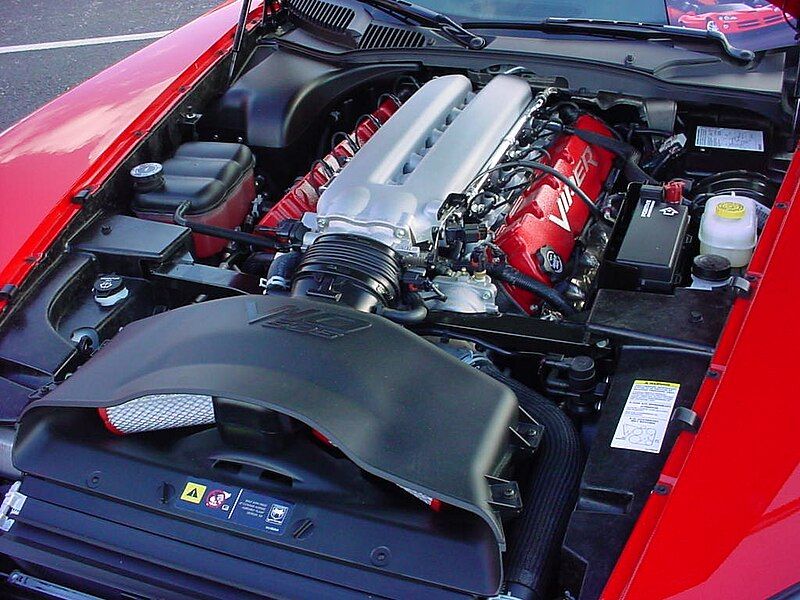
There’s a certain magic to the V10 engine, an intoxicating blend of mechanical ballet and raw sonic power that car enthusiasts universally adore. It holds a truly special place in the annals of automotive history, often reserved for the most exotic supercars and the fiercest racing machines. At the turn of the millennium, as auto brands ventured into bold new territories, the V10 truly came into its own, gracing everything from track-focused monsters to luxury cruisers. It’s no exaggeration to say that these engines delivered some of the most sonically pleasing experiences ever crafted.
Indeed, if you scour any definitive list of the best-sounding engines, a V10 is almost guaranteed to be nestled comfortably within the top ranks. The screaming, V10-powered Formula One cars from their golden era are still regarded by many as the pinnacle of automotive acoustics, a testament to this configuration’s inherent musicality. But the V10’s charm isn’t confined to the race track alone; its unique character, that transition from a guttural growl to an ear-splitting wail, makes it an unforgettable centerpiece in any high-performance vehicle.
We’re about to embark on an exhilarating journey, a deep dive into the hearts of some of the most phenomenal V10 engines ever conceived. While we’ve chosen to focus primarily on road-legal marvels and V10s from other motorsport competitions, each one on this list represents a technological tour de force, an engineering triumph, and, crucially, a symphony on wheels. Get ready to rev your engines and remember the absolute rulers of sound from the ’00s!
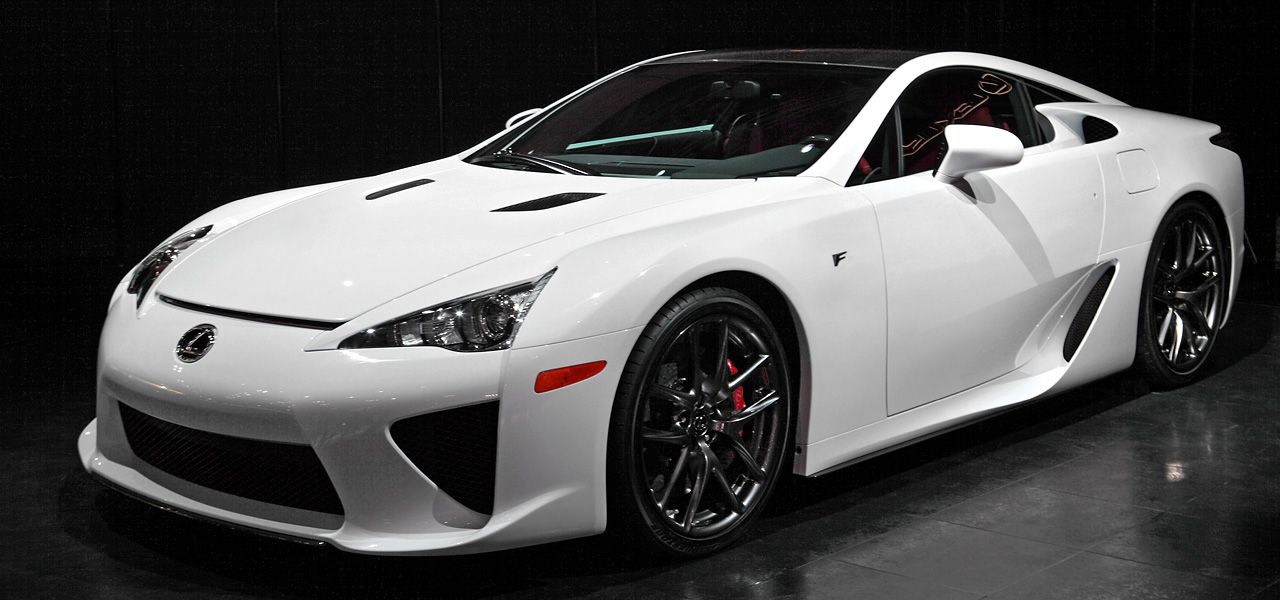
1. **Lexus LFA 4.8L V10**Visceral, yet incredibly sophisticated, the naturally aspirated V10 nestled within the Lexus LFA is arguably one of the finest-sounding engines ever created, a true legend in its own right. This wasn’t just an engine; it was a marriage of precision and power, clearly channeling Toyota’s vast F1 V10 era experience into a road-legal masterpiece, offering a truly mesmerizing aural bonanza that leaves an indelible mark on anyone fortunate enough to hear it.
From the moment it awakens, the LFA’s V10 delivers a deep, throaty idle, akin to an angry animal slowly stirring from slumber. As the revs ascend, the sound intensifies dramatically, transforming into a high-pitched, sharp metallic tone that builds with electrifying urgency. Near its incredible 9,000 rpm redline, you’re treated to an F1-like sonorous crescendo, a sound that many believe has no equal in the entire motoring world, a testament to Lexus’s audacious ambition.
But this magnificent sound wasn’t a happy accident; it was a deliberate, obsessive pursuit of acoustic perfection. Co-developed with Yamaha’s renowned acoustic experts, the 1LR-GUE V10 features a special surge tank with ribbed walls, ingeniously inspired by Yamaha’s musical instruments, specifically designed to enhance the engine’s symphony. Special acoustic ducts and a sound adjuster panel were also meticulously employed to channel the most desired frequencies directly into the cabin, particularly above 3,000 rpm, ensuring the driver is always immersed in its glorious song.
To suggest that Lexus and Yamaha merely ‘developed’ the sound would be a severe understatement; they went absolutely berserk, pushing the boundaries of automotive acoustics. As a final flourish, the LFA also boasts a titanium, valve-actuated, multi-stage muffler, instrumental in forging that unique, F1-esque noise. Beyond its auditory brilliance, the LFA engine is a technological marvel, featuring 10 individual throttle bodies, titanium alloy conrods, a lightened crankshaft, and 12-hole fuel injectors. It’s astonishingly compact, as small as a V8, and remarkably light, comparable to a V6, yet it unleashes 553 hp at 8,700 rpm in its standard guise, or 563 hp in the Nürburgring Edition, proving its mettle as one of the most special road car engines ever.
Car Model Information: 2012 Lexus LFA Coupe 2D
Name: Lexus LFA
Manufacturer: Toyota
ModelCode: LFA10
Production: December 2010 – December 2012,500 units
Assembly: Toyota, Aichi
Class: Sports car
BodyStyle: coupé
Layout: Front mid-engine, rear-wheel-drive
Designer: Kengo Matsumoto (chief designer)
Engine: Toyota LR engine#1LR-GUE,Firing order#Even and uneven firing order,V10 engine
Transmission: List of Aisin transmissions#Longitudinal rear-wheel drive (transaxle),Automated manual transmission
Wheelbase: 2605 mm
Abbr: on
Length: 4505 mm
Width: 1895 mm
Height: 1220 mm
Weight: 3483 lb
Order: flip
Categories: All Wikipedia articles written in British English, All articles containing potentially dated statements, All articles with dead external links, Articles containing Japanese-language text, Articles containing potentially dated statements from 2020
Summary: The Lexus LFA is a two-door sports car produced between 2010 and 2012 by the Japanese carmaker Toyota under its luxury marque, Lexus. Lexus built 500 units over its production span of two years. The development of the LFA, codenamed TXS, began in early 2000. The first prototype was completed in June 2003, with regular testing at the Nürburgring starting in October 2004. Over the decade, numerous concept cars were unveiled at various motor shows. The first concept appeared in January 2005 at the North American International Auto Show as a design study. In January 2007, a more aerodynamic design was introduced, and in January 2008, a roadster version was showcased. The production version of the LFA debuted at the Tokyo Motor Show in October 2009—commemorating Lexus’s 20th anniversary—and the official manufacture of the car began on 15 December 2010 at the Motomachi production facility in Toyota, Aichi. The 4.8 L 1LR-GUE V10 engine, as fitted to the LFA, produces a power output of 412 kilowatts (560 PS; 553 hp) and 480 newton-metres (350 lb⋅ft), sufficient to give the car a 0–97 km/h (60 mph) of 3.6 seconds and a maximum speed of 325 kilometres per hour (202 mph). The LFA’s body mass is composed of sixty-five per cent carbon fibre-reinforced polymer, and incorporates various lightweight materials such as aluminium, titanium and magnesium. Lexus ended production of the LFA on 17 December 2012, two years and two days after it commenced. The LFA has received awards including Road & Track’s “Best of the 2009 Tokyo Auto Show” and Top Gear’s “5 Greatest Supercars of the Year”.
Get more information about: Lexus LFA
Buying a high-performing used car >>>
Brand: Lexus Model: LFA
Price: $849,990 Mileage: 4,724 mi.
Read more about: Legends on Wheels: 15 Iconic Classic Cars Every Enthusiast Dreams of Owning
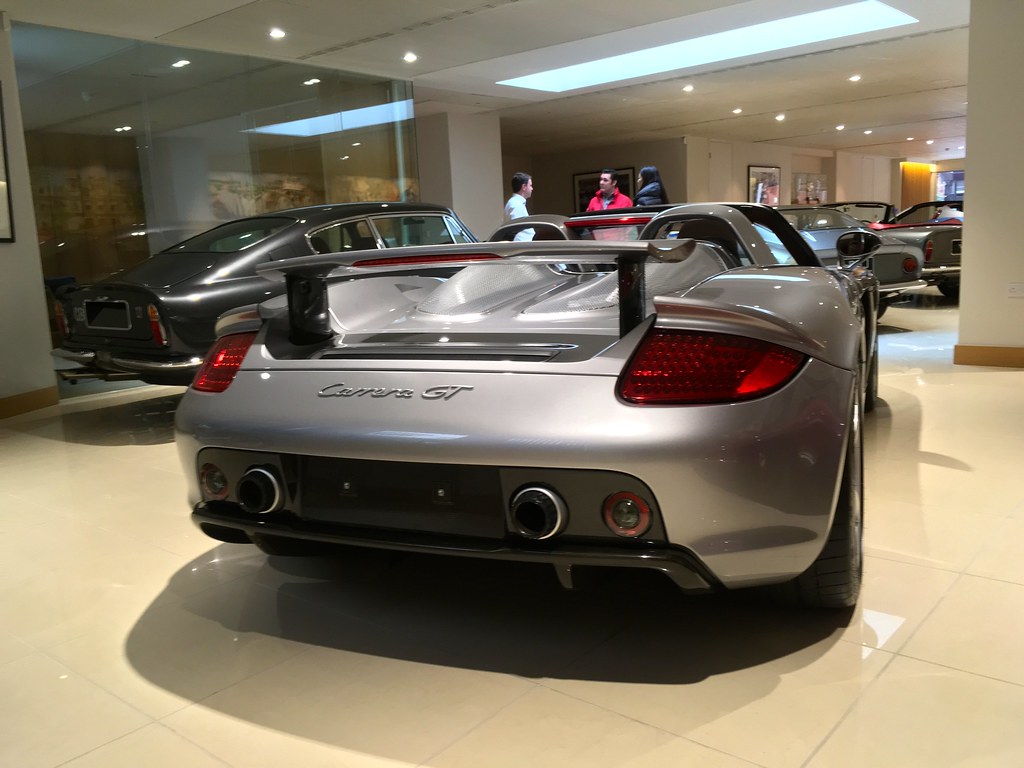
2. **Porsche Carrera GT 5.7L V10**Ready for another high-revving acoustic assault that will send shivers down your spine? This time, the sonic delight comes courtesy of Porsche’s singular road-legal V10 machine, the utterly breathtaking Carrera GT. With an engine sound often mentioned in the same breath as the legendary LFA’s V10, Porsche’s race-derived, 5.7-liter unit provides undeniable proof that V10s truly are among the best-sounding engines on the planet, if not the undisputed champions.
Ferocious and spine-tingling, the Carrera GT’s special V10 possesses a sonic signature that shares an undeniable kinship with the LFA. It commences with a low, potent rumble at idle, a promise of the fury to come. As you eagerly push the revs, it transforms, unleashing an increasingly high-pitched scream that’s never tiring; in fact, it sounds almost as if it’s constantly begging for more, challenging you to push it further. Its roots in F1 and Le Mans development make it hardly surprising that the Carrera GT screams almost like a bona fide Formula 1 car, delivering an authentic race-bred experience.
While possessing a similar sonic character, the Carrera GT generally offers a rougher, perhaps less overtly sophisticated, tone compared to its Japanese counterpart. Yet, this raw, unfiltered approach holds a distinct appeal, with many purists preferring Porsche’s unbridled vocalization – and who are we to argue with such exquisite taste? This is an engine that speaks directly to the soul of the driver, demanding attention and rewarding engagement.
Two critical elements truly set the Carrera GT apart, enhancing its visceral appeal. Firstly, it comes equipped with a six-speed manual gearbox, paired with a feather-light ceramic clutch, a monumental bonus for those who cherish pure, unadulterated driving engagement. Secondly, its removable roof allows you to immerse yourself in the V10’s full, glorious symphony without inhibition. While it may not feature special sound chambers like the LFA, the Carrera GT never needed them; its inherent engineering brilliance speaks volumes.
Porsche’s 5.7-liter V10 is also a powerhouse, producing a mighty 605 hp, enough to propel it to a claimed top speed of 205 mph. It may have a slightly lower 8,400-rpm redline, but its instant throttle response is utterly intoxicating. Furthermore, it’s an engineering marvel, boasting a light alloy crankcase and titanium connecting rods. Crucially, it’s positioned in the center of a super-stiff and lightweight carbon fiber monocoque chassis, ensuring impeccable weight distribution and handling prowess that makes this car a true driver’s legend.
Car Model Information: 2025 Alfa Romeo Stelvio Sprint
Name: Porsche Carrera GT
Manufacturer: Porsche
Production: 2003–2006,1,270 produced
Assembly: Leipzig
Designer: Harm Lagaay
Class: Sports car
BodyStyle: Targa top,Roadster (automobile)
Layout: Rear mid-engine, rear-wheel drive layout
Engine: 5733 cc
Abbr: on
Order: Porsche 5.7 liter V10 engine,Overhead camshaft#Dual overhead camshaft,V10 engine
Powerout: 450 kW
Transmission: Manual transmission
Wheelbase: 2730 mm
Length: 4613 mm
Width: 1921 mm
Height: 1166 mm
Weight: 1380 kg
Sp: us
Predecessor: Porsche_911_GT1#Street-legal_version
Successor: Porsche 918 Spyder
Categories: All articles needing additional references, All articles with dead external links, Articles needing additional references from August 2022, Articles with dead external links from August 2023, Articles with dead external links from May 2025
Summary: The Porsche Carrera GT (Project Code 980) is a mid-engine sports car that was manufactured by German automobile manufacturer Porsche from 2003 to 2006. Sports Car International named the Carrera GT number one on its list of Top Sports Cars of the 2000s, and number eight on its Top Sports Cars of All Time list. For its advanced technology and development of its chassis, Popular Science magazine awarded it the “Best of What’s New” award in 2003.
Get more information about: Porsche Carrera GT
Buying a high-performing used car >>>
Brand: Porsche Model: Carrera GT
Price: $54,000 Mileage: 889 mi.
Read more about: 10 Jaw-Dropping Celebrity Cars Seized for Unpaid Taxes (You Won’t Believe Who!)

3. **BMW M5 E60 & M6 E63 5.0L V10 (S85)**Much like the legendary engines from Lexus and Porsche, BMW’s sensational V10 also traces its formidable roots back to the illustrious F1 V10 era. However, in a move that truly defined its character, the Bavarian automaker elected to bestow this naturally aspirated gem upon its already iconic existing automobiles: the 5 Series and 6 Series. This audacious decision transformed the M5 E60 and M6 E63 into something truly special, making them the only V10-powered cars ever to wear the revered BMW badge, a fact that still thrills enthusiasts today.
But don’t for a second let that unique application fool you into thinking the S85 engine doesn’t deserve its hallowed place in the pantheon of V10 greats. This magnificent 5.0-liter unit was a powerhouse, unleashing a thrilling 500 hp at 7,750 rpm and featuring an electrifying 8,250-rpm redline. It was absolutely brimming with F1-derived technology, including individual throttle bodies, incredibly light components forged from eutectic aluminum and silicon alloy, and robust magnesium-steel conrods – a true testament to its racing pedigree. BMW even adopted the exact same production methods as its illustrious F1 engine team, demonstrating an unwavering commitment to performance.
Of course, all this cutting-edge tech, while exhilarating, unfortunately rendered the S85 quite complex and, at times, notoriously unreliable. It’s no secret that it can be an expensive endeavor to maintain and repair, a challenge that dedicated owners willingly embrace. And let’s not overlook the frequently criticized, rough, and sensitive single-clutch automated transmission, which was regrettably paired with the majority of S85-powered cars. These quirks, however, become distant memories, mere footnotes, the instant you experience the sheer auditory brilliance of the BMW V10 as it truly sings.
When this engine comes alive, its sound is nothing short of breathtaking. Tactile and precise, it delivers a raspy, metallic edge that intensifies gloriously at higher rpm, imbuing the M5 E60 and M6 E63 with an undeniable F1 soul. It’s an engine that is simultaneously energetic and muscular, raw yet intricately refined. Crucially, it charges you with a surge of adrenaline unlike any other BMW M car, delivering a thrilling, immersive driving experience that transcends its imperfections. It’s a V10 that not only performs but truly speaks to your very core.
Car Model Information: 2025 Alfa Romeo Stelvio Sprint
Name: BMW M5
Caption: F90 M5 (left) and E28 M5 (right)
Manufacturer: BMW M
Production: 1984–present
Class: Executive car
Layout: Front-engine, rear-wheel-drive,(1984–1995, 1998–2016)
Related: BMW 5 Series,BMW M6
Categories: 1990s cars, 2000s cars, 2010s cars, 2020s cars, All Wikipedia articles written in British English
Summary: The BMW M5 is a high-performance version of the BMW 5 Series automobile developed by BMW’s motorsport division, BMW M GmbH, built from 1992 to 1995, 2006 to 2010, and since 2024. The M5 has continuously been produced in the saloon body style, in some countries also as a estate.
The first M5 model was hand-built beginning in late 1984 on the E28 535i chassis with a modified engine from the M1 that made it the fastest production saloon at the time. M5 models have been produced for every generation of the 5 Series since 1984, with occasional gaps in production (1995 to 1998, 2023 to 2024).
Get more information about: BMW M5
Buying a high-performing used car >>>
Brand: BMW Model: M5 E60
Price: $54,000 Mileage: 889 mi.
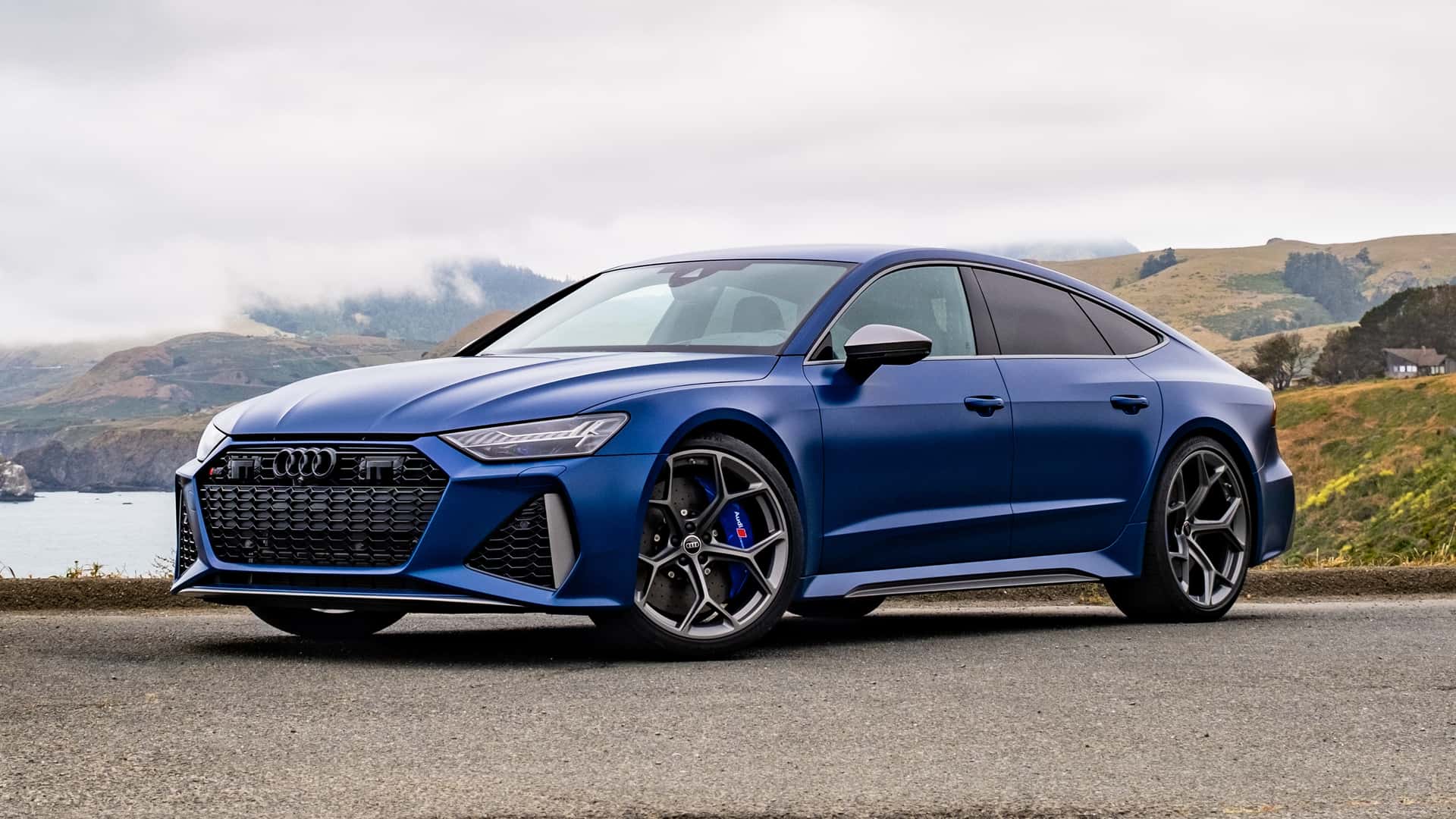
4. **Audi RS6 C6 5.0L Twin-Turbo V10**The sheer audacity and headline-grabbing presence of the BMW M5 E60 seemingly ignited a spark within Audi, inspiring them to unleash a V10-powered family car of their own onto the unsuspecting automotive world. Thus, a mere three years later, Audi introduced the formidable V10-powered RS6 C6, available in both potent sedan and practical wagon forms. With Audi’s parent company, the VW Group, also owning Lamborghini, the Ingolstadt-based automaker ingeniously borrowed the formidable 5.0-liter V10 engine directly from the legendary Gallardo, setting the stage for an epic battle.
In Lamborghini’s mid-engine supercar, this V10 produced a thrilling 512 hp at 8,000 rpm – a potent figure, certainly, but Audi had grander ambitions than merely matching the M5. With the RS6 C6, Audi boldly opted for a twin-turbocharged configuration, not just to trump its biggest rival in raw horsepower, but, crucially, to endow its sizable executive machines with an abundance of low-end torque. The result was truly staggering: a colossal 571 hp and an earth-shattering 479 lb-ft of torque, figures that in 2008 were nothing short of mind-boggling for a family car, pushing the boundaries of what was considered possible.
Turbocharged engines, by their very nature, seldom deliver the same visceral or exciting acoustic profile as their naturally aspirated counterparts. The turbochargers, acting as mufflers for both the intake and exhaust, inevitably subdue some of those glorious, satisfying noises. Yet, despite this inherent challenge, Audi performed a stellar job with the Lamborghini-derived V10. What it might subtly lack in a raw motorsport vibe, this V10 more than compensates for with a deeper, more muscular tone, delivering an authoritative presence that is undeniably captivating.
Even with the turbos, this engine retains that unique V10 signature, sounding throaty and aggressively powerful as it approaches its redline. And let’s not forget the distinctive, oxygen-sucking rush from the turbochargers themselves, which imbues this engine with an utterly unique character, a blend of brute force and sophisticated engineering. The RS6 C6, on a closed course, was capable of an astonishing 188 mph (303 km/h), demonstrating that this V10 was not only powerful but also incredibly fast, redefining what a performance wagon could be.
Car Model Information: 2025 Alfa Romeo Stelvio Sprint
Name: Audi RS 6
Caption: 2021 Audi RS 6 Avant
Manufacturer: Audi Sport GmbH
Production: 2002–2004 , 2008–2010 , 2013–present
Assembly: Neckarsulm
Class: Executive car
Layout: Front-engine, four-wheel-drive layout
Platform: Volkswagen Group MLB platform
Transmission: Tiptronic,list of ZF transmissions#Automatic transmissions
Related: Audi A6,Audi S6
Sp: Nok
Categories: 2010s cars, All-wheel-drive vehicles, All articles containing potentially dated statements, All articles that are excessively detailed, All articles with style issues
Summary: The Audi RS 6 is a high-performance variant of the Audi A6 range, produced by the high-performance subsidiary company Audi Sport GmbH, for its parent company Audi AG, a subsidiary of the Volkswagen Group, from 2002 onwards.
The first and second versions of the RS 6 were offered in both Avant and saloon forms. The third and fourth generations are only offered as an Avant.
Get more information about: Audi RS 6
Buying a high-performing used car >>>
Brand: Audi Model: RS6 C6
Price: $54,000 Mileage: 889 mi.

5. **Lamborghini Gallardo 5.0L V10**While the baritone twin-turbo V10 was a magnificent fit for the Audi RS6 C6, such a setup wouldn’t quite align with the purebred, mid-engine ethos of a Lamborghini supercar. The Gallardo’s original 5.0-liter V10 was conceived as a naturally aspirated unit, engineered from the ground up to stir the very soul of anyone within earshot. It wasn’t merely the absence of turbos that distinguished this engine; Lamborghini’s engineers poured immense effort into crafting a mesmerizing sonic extravaganza, ensuring every drive was an auditory feast.
Notably, this engine boasts an unusual and distinctive 7-8-5-2-1-10-9-4-6-3 firing order, a deliberate choice that endowed it with a far more raw, intensely mechanical sound. The unconventional 90-degree angle between the cylinder banks further contributed to its signature noise, adding layers of complexity and character to its aural output. But how does it truly sound when unleashed? It’s raspy and throaty at lower revolutions, perhaps even a tad ‘lumpy,’ but in the most profoundly good way imaginable. It’s precisely the kind of noise that instantly awakens your senses, even before you press the accelerator pedal, a prelude to the exhilaration that awaits.
Of course, the real fun, the true magic of the Gallardo’s V10, unfurls at higher rpm. Like any truly great V10, Lamborghini’s 5.0-liter unit reveals an angrier, more ferocious attitude as the revolutions relentlessly build. It steadfastly retains its mechanical edge, yet this edge becomes infused with even greater fury, an almost primal scream. Near its impressive 8,050-rpm redline, the sound escalates into a higher-pitched wail, but crucially, it never loses that characteristic raspy quality, maintaining its unique, untamed identity.
For its era, Lamborghini’s V10 was also exceptionally potent, generating a formidable 493 hp and 376 lb-ft of torque, figures that ensured electrifying performance. Two six-speed transmission options were offered: a traditional manual and an automated manual. Both were capable of sprinting to 62 mph in a blistering 4.2 seconds, but it’s the legendary gated manual that truly stole the show, providing an unmatched level of driver involvement and cementing the Gallardo’s status as a pure, unadulterated supercar icon.
Car Model Information: 2006 Lamborghini Gallardo SE
Name: Lamborghini Gallardo
Caption: 2008–2013 Lamborghini Gallardo Superleggera
Manufacturer: Lamborghini
Production: 2003–2013
Assembly: Sant’Agata Bolognese
Designer: Italdesign,Luc Donckerwolke,Walter de Silva
Class: Sports car
BodyStyle: coupé
Related: Audi R8 (Type 42)
Layout: Longitudinal engine,Rear mid-engine, rear-wheel-drive layout
Engine: Lamborghini V10,5.2 L Lamborghini odd firing V10 (facelift)
Transmission: Graziano Trasmissioni,Manual transmission
Wheelbase: 2560 mm
Abbr: on
Length: convert
Width: 1900 mm
Height: Coupé: {{convert,1165,mm,in,1,abbr=on
Weight: LP 560-4: {{convert,3310,lb,kg,0,abbr=on,order=flip
Order: flip
Sp: uk
Predecessor: Lamborghini Jalpa
Successor: Lamborghini Huracán
Categories: 2010s cars, All articles with dead external links, All articles with unsourced statements, Articles with dead external links from March 2017, Articles with hAudio microformats
Summary: The Lamborghini Gallardo (; Spanish: [ɡaˈʎaɾðo]) is a sports car built by the Italian automotive manufacturer Lamborghini from 2003 to 2013. It is Lamborghini’s second car released under parent company Audi, and the best-selling model at the time with 14,022 built throughout its production run. Named after a famous breed of fighting bull, the V10 powered Gallardo has been Lamborghini’s sales leader and stable-mate to a succession of V12 flagship models—first to the Murciélago (4,099 built between 2001 and 2010), then to the Aventador, being the first entry-level Lamborghini in one-and-half decades. On 25 November 2013, the last Gallardo was rolled off the production line. The Gallardo was replaced by the Huracán in 2014.
Get more information about: Lamborghini Gallardo
Buying a high-performing used car >>>
Brand: Lamborghini Model: Gallardo
Price: $85,999 Mileage: 26,493 mi.
Read more about: Unveiling Kim Kardashian’s Epic Custom Car Collection: Her Jaw-Dropping Fleet Designed to Match Her Signature Style

6. **Audi R8 & Lamborghini Huracán 5.2L FSI V10**Audi’s sophisticated 5.2-liter V10 arrived as the successor to Lamborghini’s earlier 5.0-liter unit in the Gallardo, representing a more modern, technologically advanced powerplant with an even higher power ceiling. In the Gallardo LP570-4 Superleggera, for instance, this enhanced engine produced a staggering 562 bhp, cementing its performance credentials. However, this remarkable engine truly soared to prominence, becoming synonymous with the Audi R8 and Lamborghini Huracán, both mid-engine supercars that proudly shared the same cutting-edge platform, showcasing its versatility and raw power.
Purists might argue that Audi’s 5.2-liter engine isn’t quite as raw or untamed as its Lamborghini predecessor, and they might have a point. Yet, it would be a grave mistake to dismiss this magnificent V10, for it stands as one of the most exquisitely engineered naturally aspirated engines of its time. This shouldn’t come as a surprise, given that Audi Sport GmbH meticulously incorporated technology honed during its hugely successful Le Mans racing program, including advanced features like Fuel Stratified Injection (FSI) and robust dry sump oiling systems, ensuring both performance and reliability under extreme conditions.
But what about the sound, the very heart of these V10 legends? A crucial detail lies in its firing order: Audi’s 5.2-liter unit boasts a distinct 1-6-5-10-2-7-3-8-4-9 configuration. As a consequence, it offers a slightly more refined acoustic profile compared to its earlier Lambo counterpart, subtly lacking that characteristic raspy noise. Nevertheless, its sound builds perhaps even more beautifully, more harmonically, as it approaches its thrilling 8,700-rpm redline, culminating in more of a high-pitched, F1-like wail that is utterly intoxicating.
Overall, the 5.2-liter V10 generates an incredibly satisfying, rich, and deeply harmonic sound that effortlessly gets under your skin, connecting you intrinsically to the machine. In the rear-wheel-drive Lamborghini Huracán Tecnica, this formidable V10 delivers a colossal 630 hp and 417 lb-ft of torque, ensuring blistering performance. While some might argue for the absurdly fun, off-road-ready Lamborghini Huracán Sterrato, despite its slightly reduced 610 hp, as the best fit for this engine, there’s also an incredibly strong case to be made for the six-speed manual R8 V10, standing as one of the last supercars to offer a stick shift, providing an unparalleled tactile experience.
Car Model Information: 2018 Audi R8 5.2 V10
Caption: Audi R8 V10 Plus (Type 4S)
Manufacturer: Audi
Production: June 2006 – March 2024,(45,949 Units)
Class: Sports car
BodyStyle: coupé
Layout: Longitudinal engine,Mid-engine design,rear-wheel-drive
Sp: uk
ModelYears: 2007–2024
Categories: 2010s cars, 2020s cars, All articles with unsourced statements, Articles with short description, Articles with unsourced statements from March 2019
Summary: The Audi R8 is a mid-engine, 2-seater sports car, which uses Audi’s trademark quattro permanent all-wheel drive system. It was introduced by the German car manufacturer Audi AG in 2006. Production ended in the first quarter of 2024.
The car is exclusively designed, developed, and manufactured by Audi AG’s private subsidiary company manufacturing high performance automotive parts, Audi Sport GmbH (formerly quattro GmbH), and was inspired by the Lamborghini Gallardo albeit the second generation is built using the Huracán platform. The fundamental construction of the R8 is based on the Audi Space Frame, and uses an aluminium monocoque which is built using space frame principles. The car is built by Audi Sport GmbH in a newly renovated factory at Audi’s ‘aluminium site’ at Neckarsulm in Germany. At the time it was introduced in 2006, the R8 became the first production car with full-LED headlamps.
Get more information about: Audi R8
Buying a high-performing used car >>>
Brand: Audi Model: R8
Price: $134,995 Mileage: 16,702 mi.
Read more about: Serving Up Style: Discover the Jaw-Dropping Cars in Novak Djokovic’s Extravagant Collection

7. **Audi S8 D3 5.2L FSI V10**Imagine desiring to luxuriate in the glorious soundscape of a V10, yet simultaneously wishing to dampen every other noise that emanates from a car – a seemingly contradictory desire that the Audi S8 D3 masterfully resolves. This executive super-sedan stands as the most luxurious car ever fitted with a V10, meticulously designed to provide you with the quietest possible ride at speed, all while artfully tickling your ears with a subtly aggressive, supercar-like engine symphony. It’s a remarkable fusion of opulent refinement and underlying performance.
The naturally aspirated 5.2-liter V10 residing within the sophisticated S8 D3 is intimately related to the engines found in the illustrious R8, Gallardo, and Huracán. However, it’s not an identical twin. Given that the S8 isn’t engineered for grueling track duty, it utilizes a wet sump oiling system, diverging from the dry sump setups of its more sporting relatives. Additionally, its crankshaft isn’t quite as stiff, and its pistons are crafted from cast aluminum, tailored for its specific application rather than outright track performance.
As a direct consequence of these differences, the S8’s V10 produces a slightly lower, yet still immensely respectable, horsepower rating of 444 hp. Crucially, it delivers the same robust 398 lb-ft of torque as the original Gallardo, but it does so at a remarkably accessible 3,000 rpm, ensuring effortless power delivery in everyday driving scenarios. That’s more than enough grunt for a brisk 0-62 mph (0-100 km/h) sprint in just 4.9 seconds, an impressive feat considering its traditional six-speed automatic transmission and a significant curb weight of 4,609 pounds.
While perhaps not as ferociously tuned as the versions built for Audi’s and Lamborghini’s mid-engine supercars, the 5.2-liter V10 emits a truly lovely sound within the confines of the S8. It possesses more of a baritone quality, a deep, resonant hum that perfectly suits the car’s understated, luxurious character. However, push it harder, and you’ll undeniably hear that angry V10 growl that every enthusiast adores. It carries that unmistakable motorsport quality, as if a small, potent racecar lies thrillingly buried deep beneath the S8’s impeccably crafted hood, ready to unleash its inner beast at a moment’s notice.
Beyond the Roar: Exploring 6 More Iconic V10 Engines of Motorsport and Extreme Performance
Welcome back, gearheads! If you thought the road-legal V10s we just celebrated were thrilling, prepare yourselves, because we’re about to delve into a realm where raw power, ear-splitting acoustics, and pure racing pedigree reign supreme. The V10 engine configuration isn’t just for luxurious street machines; it has profoundly shaped the world of motorsport and extreme performance, pushing the boundaries of what’s possible in terms of speed, endurance, and, of course, sound. Get ready for an even deeper dive into these mechanical marvels!
This next collection of V10 titans showcases the sheer versatility and unbridled might of this incredible engine layout, proving that whether on the asphalt or in the grueling crucible of endurance racing, the V10 truly is an absolute ruler. These are the engines that not only competed but dominated, etched into history not just by their victories but by the unforgettable symphonies they orchestrated. So, let’s ignite this next chapter and explore six more legendary V10 powerplants that defined an era.

8. **Dodge Viper VX ACR 8.4L V10**The Dodge Viper has always marched to the beat of its own drum in the American automotive landscape, steadfastly refusing to conform to the V8 norm. Instead, it was famously — and wonderfully — equipped with a colossal, monstrous V10 engine! The last-ever Viper V10, with its staggering 8.4-liter capacity, not only out-muscled its sports car rivals but even trumped many heavy-duty trucks in terms of sheer displacement, truly living up to the adage, ‘there’s no replacement for displacement.’
Unsurprisingly, this behemoth unleashes an incredible amount of power. In the hardcore Viper ACR, this engine delivers a bombastic 645 hp and an earth-shattering 600 lb-ft of torque. It’s a testament to raw, unadulterated American muscle, capable of propelling the ACR from 0-60 mph in a blistering 3.3 seconds, provided you can wrangle all that power and prevent the rear wheels from spinning into oblivion. And for purists, the best part is that this magnificent Viper ACR V10 is gloriously paired with a six-speed manual gearbox, offering an unmatched level of driver engagement.
It’s fascinating to note that the first-gen 8.0-liter Viper engine originally drew its inspiration from the truck-focused Magnum V10. However, it was then ingeniously redesigned in collaboration with Lamborghini, marrying American brute force with Italian finesse. This unique heritage meant that the Viper’s engine always featured an aluminum block while proudly retaining its distinctive pushrod design, a combination that has historically contributed to its unique character and performance.
As a result, the Viper’s engine has always possessed a distinctive tone, but it truly found its zenith in the last-generation Viper VX ACR. Its sound is wonderfully raspy, yet it delivers a lower frequency than many other V10s on this list. It’s an irregular, muscular tone, particularly noticeable at lower revolutions, which perfectly suits the aggressive, uncompromising nature of this American sports car. It boasts a complexity beyond a typical muscle car, yet still delivers that deeply satisfying, visceral roar that perfectly complements the track-honed credentials of the Dodge Viper ACR and its racecar-like aerodynamics.
Read more about: V10 Powerhouses: Unearthing Every Dodge That Rocked a Ten-Cylinder Beast and How They Stacked Up
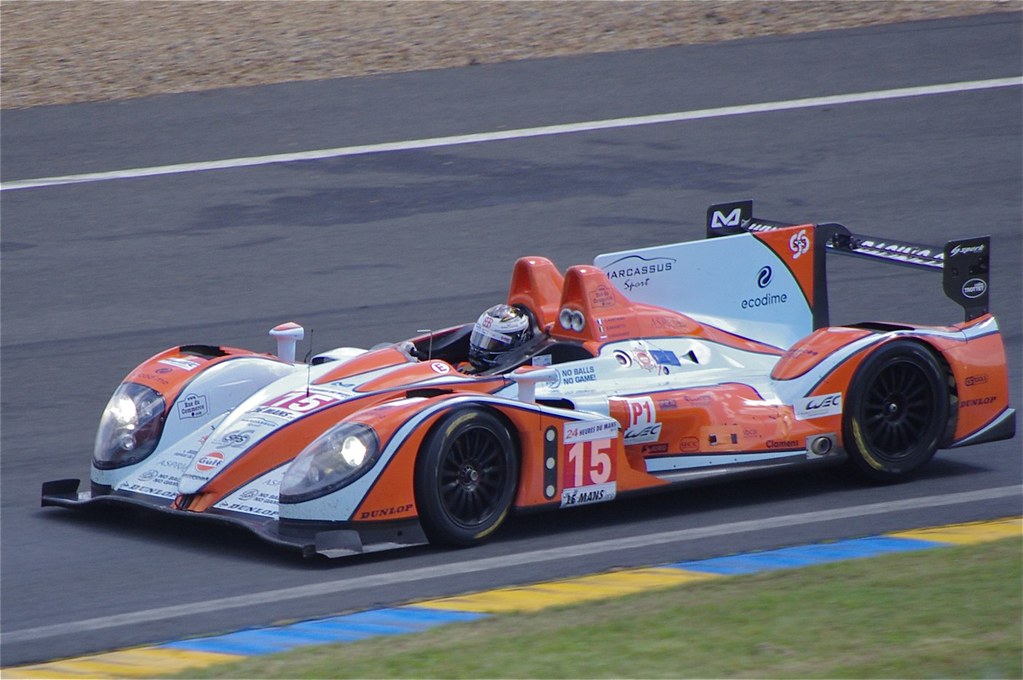
9. **Judd Power GV 4.0L V10**Stepping away from road-legal machines and into the heart of pure motorsport, we encounter the Judd Power GV 4.0-liter V10 engine, a true workhorse that graced the engine bays of many Formula 1 cars, including Benettons, Tyrrells, and Arrows. It’s important to note that this Judd engine wasn’t part of the later F1 V10 era that imposed a 3.0-liter capacity limit. Rather, the GV V10 was initially engineered with a very specific, demanding purpose in mind: to power LMP1 cars for endurance classics like the Daytona 24 Hours and the iconic 24 Hours of Le Mans.
While undoubtedly powerful, Judd Power designed this V10 with an equal emphasis on crucial endurance racing attributes such as fuel efficiency and unwavering reliability. When unleashed without restrictions, this 4.0-liter unit was a true powerhouse, capable of producing an astounding 750 hp. It boasted an impressive 11,000-rpm rev limit and was remarkably lightweight, tipping the scales at just 145 kg (320 pounds). Naturally, like any proper racing engine, it featured individual throttle bodies, a critical component that contributed significantly to its astonishing sound signature.
Like any truly great racecar engine, the Judd 4.0-liter V10 starts with an irregular, impatient growl at idle, practically begging you to floor the gas pedal. Even at rest, it’s a thunderous, characterful noise that commands attention. As the revs climb with exhilarating speed, that initial rumble transforms into a more feral, energetic noise, a primal scream of mechanical fury. Yet, amidst the ferocity, Judd’s V10 also sounds incredibly sharp and precise at higher rpm.
It’s a harmonic masterpiece, producing all the right frequencies to send serious goosebumps down your spine. And, as you’d expect from a thoroughbred racing engine, it delivers glorious pops and crackles on downshifts, adding even more character to its already mesmerizing symphony. If you’ve ever dreamt of hearing this track-only beast in a regular car, imagine no more – a Judd-powered V10 GR Supra made a show-stopping appearance at Mobil1’s booth at SEMA in 2021, proving its incredible versatility.
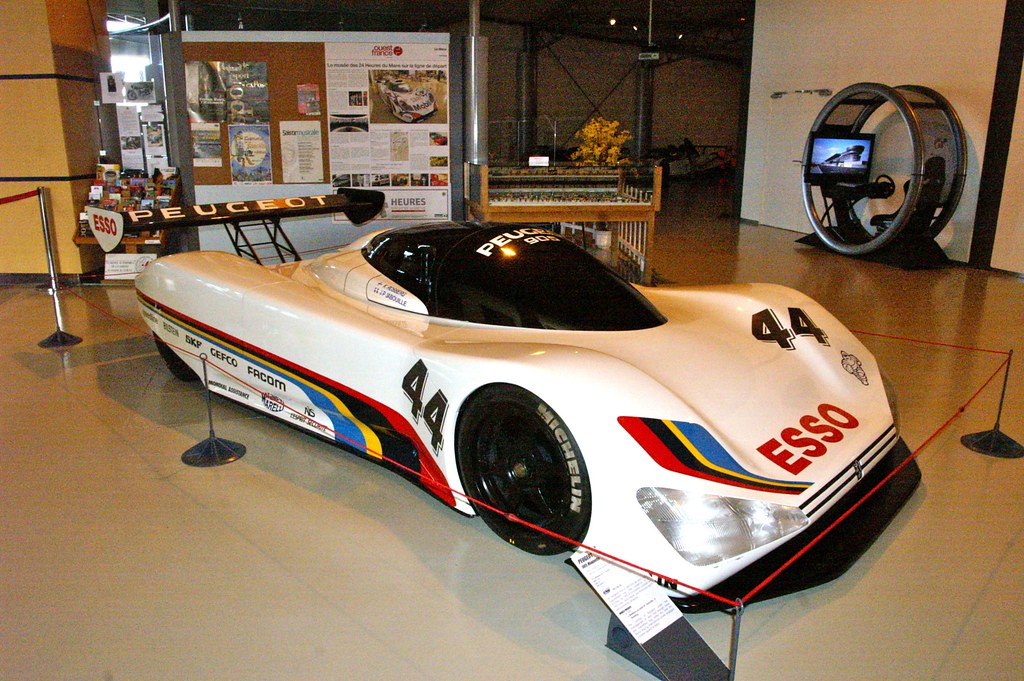
10. **Peugeot 905 Evo 1 3.5L V10**Peugeot’s resounding victory at the 1992 24 Hours of Le Mans remains a historic achievement for the French marque, a brilliant showcase of its formidable engineering prowess. It famously beat the lightning-fast Toyota TS010, proving its mettle on the global stage. The automaker then repeated its stunning success in 1993, achieving an unprecedented feat by taking all three places on the podium, cementing its legend in motorsport history. The car that brought Peugeot such immense glory was the magnificent 905, one of the iconic Group C beasts of its era.
A significant factor in the 905’s success was its meticulously streamlined body, which provided exceptional aerodynamic efficiency and allowed it to achieve incredible top speeds on the legendary Mulsanne straight. However, the undeniable star of the show was undoubtedly the 3.5-liter, naturally aspirated V10 engine nestled within its carbon-fiber chassis. This incredible powerplant delivered a colossal 650 hp at a dizzying 12,500 rpm, enough to propel the featherlight 905, with its curb weight of around 1,750 pounds, to a mind-bending top speed of 217 mph.
But beyond its racing achievements and blistering performance, we’re here to talk about the utterly glorious sound that Peugeot’s engine produced. Even at lower revolutions, it’s quite the angry machine, a potent growl hinting at the fury within. However, Peugeot’s V10 truly reaches its peak, its most captivating form, at high revs, when a high-pitched, almost operatic howl takes over, piercing the air with its intensity.
This isn’t just noise; it’s a clearer, crisper sound than even the Judd V10, as if an entire symphony orchestra of precision instruments is hiding inside the 905’s exhaust system. Close your eyes for a second while it screams past, and you could easily be fooled into thinking you’re standing trackside at a Formula 1 race, experiencing the golden age of naturally aspirated engines. It’s a truly unforgettable auditory experience that speaks volumes about Peugeot’s commitment to engineering excellence.

11. **Audi R15 TDI 5.5L V10**Audi stands as one of the most successful manufacturers ever to compete at Le Mans, and a significant portion of that success can be attributed to its groundbreaking TDI turbodiesel engines. The ingenious combination of excellent low-down torque and unparalleled fuel efficiency gave Audi a distinct and often insurmountable advantage over its gasoline-powered rivals in endurance racing. Audi’s initial diesel-powered prototype for Le Mans, the R10 TDI, was a formidable machine, packing a 5.5-liter twin-turbo V12 that churned out 650 hp and a massive 811 lb-ft of torque.
For the second-generation diesel prototype, the R15 TDI, Audi strategically opted for a smaller, lighter, and more economical engine configuration: a 5.5-liter, twin-turbo V10. This new V10 powerplant was still incredibly potent, producing over 600 hp and 770 lb-ft of torque, while simultaneously being 100 mm (3.94 inches) shorter than its V12 predecessor. This design choice underscored Audi’s continuous pursuit of efficiency and performance within the demanding rules of endurance racing.
Predictably, the turbodiesel V10 of the R15 TDI sounds entirely unlike any gasoline V10 you’ve ever encountered. There are no soaring high-pitched noises, no exhilarating screams that define its petrol-guzzling counterparts. Yet, despite this, the V10 TDI possesses a unique, unmistakably menacing sound as it powers past. It is significantly quieter than a gas engine, yes, but it still emits a distinct raspy, deep, and bassy growl.
It’s a sound that evokes the image of a “silent killer,” a machine that conquers through relentless efficiency and overwhelming torque rather than deafening acoustics. While you could capture some of the V10 TDI’s magic in the road-legal Volkswagen Touareg, it’s worth noting that the production 5.0-liter engine sounded considerably tamer, lacking the purposeful menace of its racing sibling.
Car Model Information: 2020 Jeep Wrangler Sport
CarName: Audi R15 TDI
Category: Le Mans Prototype
Constructor: Audi
Predecessor: Audi R10 TDI
Successor: Audi R18
Designer: Ulrich Baretzky
Team: flagicon,Joest Racing
Drivers: flagicon,Allan McNish,flagicon,Marco Werner,flagicon,Mike Rockenfeller,flagicon,Romain Dumas,flagicon,André Lotterer,flagicon,Benoît Tréluyer
Chassis: Carbon fibre,monocoque
FrontSuspension: shock absorber,sway bar
RearSuspension: Double wishbone, torsion bar with separate damper, anti-roll bar
Length: Convert
Width: Convert
Height: Convert
Wheelbase: Convert
EngineName: Audi,TDI (engine)
Capacity: 5.5 litre
Configuration: V10 engine
EnginePosition: mid-engine design,longitudinal engine
GearboxName: X-trac
Gears: 5-speed
Type: sequential manual transmission
Weight: 900 kg
Abbr: on in 2010
Fuel: Royal Dutch Shell,Shell V-Power
Tyres: Michelin
Debut: 2009 12 Hours of Sebring
Races: 10
Wins: 3
ConsChamp: 0
DriversChamp: 0
Poles: 1
FastestLaps: 2
Categories: 24 Hours of Le Mans race cars, Articles with hAudio microformats, Articles with short description, Audi racing cars, Commons category link is on Wikidata
Summary: The Audi R15 TDI, commonly abbreviated to the R15, is a Le Mans Prototype (LMP) racing car constructed by the German car manufacturer Audi AG. It is the successor to the Audi R10 TDI.
Like its predecessor, the R15 TDI uses a turbocharged diesel engine, although the R15’s V10 engine is physically smaller than the R10’s V12. The smaller engine is pushed further toward the middle of the car than in the R10, resulting in a more neutral weight balance that gives the car better agility around the corners than its predecessor.
Get more information about: Audi R15 TDI
Buying a high-performing used car >>>
Brand: Audi Model: R15 TDI
Price: $25,000 Mileage: 54,707 mi.
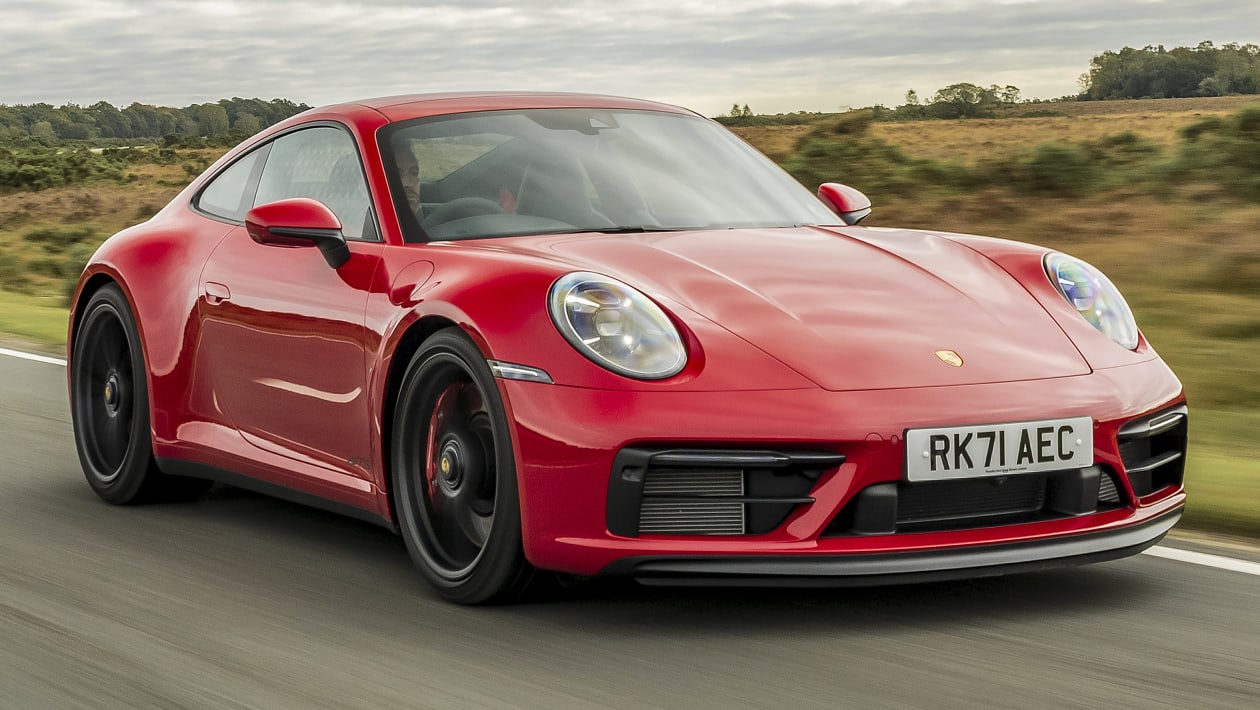
12. **Porsche LMP 2000 5.5L V10**Unlike the triumphant prototypes from Peugeot and Audi, the magnificent Porsche LMP 2000 never had the chance to compete at Le Mans, a truly tragic chapter in motorsport history. This ambitious project only managed to cover a mere 48 miles during two days of initial testing before it was prematurely shelved. Porsche famously cited budgetary reasons for the demise of its LMP900 Le Mans prototype project, a decision that still saddens enthusiasts who recognize its incredible potential.
This was a machine that was clearly prepping to be a motorsport titan. Powered by a naturally aspirated 5.5-liter V10 engine, which promised nearly 600 hp, combined with advanced aerodynamics and a remarkably low 1,985-pound curb weight, the LMP 2000 should have immediately been a contender for overall victory at Le Mans. Instead, this incredible prototype remained hidden under closed doors for a quarter-century, its potential tragically unfulfilled, a silent testament to what might have been.
However, in 2024, Porsche finally uncovered its fallen hero, restoring the racecar to its former glory. Crucially for us, this grand unveiling allowed the world to hear this exceptional V10 sing on the racetrack once again, bringing its lost symphony back to life. This 5.5-liter V10 was directly derived from Porsche’s 3.5-liter Formula 1 concept engine, an engine that also, coincidentally, never raced, giving it an undeniable F1-like auditory character.
Its sound is a complex, richly harmonious noise, masterfully combining a thrilling high-pitched scream that evokes visions of open-wheel racing with a deep, satisfying low rumble, creating a truly captivating acoustic experience. The LMP 2000 might never have made it to the starting grid, but its legacy lived on in a profound way: the V10 stunner nestled in Porsche’s iconic Carrera GT, which we celebrated earlier in this list, was directly based on the LMP 2000’s engine, ensuring its racing DNA continued to thrill on the road.
Car Model Information: 2020 Jeep Wrangler Sport
CarName: Porsche LMP2000
Caption: Porsche LMP2000 at the Porsche Museum in Stuttgart
Category: Le Mans Prototype
Constructor: Porsche,Lola Composites
Designer: Norbert Singer,Wiet Huidekoper
Predecessor: Porsche WSC-95
Successor: Porsche RS Spyder
Drivers: Bob Wollek,Allan McNish
Chassis: Carbon fibre
EngineName: Porsche V10 engine
Capacity: convert
Configuration: dual overhead camshaft,V10 engine
EnginePosition: mid-engine
Power: 700 hp
Abbr: on @ 10,000 rpm
Gears: 6-speed
Type: Sequential manual transmission
Weight: convert
Debut: N/A
Races: 0
Wins: 0
Poles: 0
FastestLaps: 0
Categories: Articles with short description, Le Mans Prototypes, Mid-engined cars, Porsche racing cars, Rear-wheel-drive vehicles
Summary: The Porsche LMP2000 (codename Porsche 9R3) is a Le Mans Prototype racing car that was developed between 1998 and 2000, but never raced. One car was built, and it was designed around a modified version of Porsche’s 3.5-litre V10 engine that was originally designed for Formula 1 in 1992. The project was canceled before the car was publicly unveiled, leading to various rumors about the reason for its demise.
Get more information about: Porsche LMP2000
Buying a high-performing used car >>>
Brand: Porsche Model: LMP 2000
Price: $25,000 Mileage: 54,707 mi.
Read more about: Beyond the Hangar Doors: A Deep Dive into Jerry Seinfeld’s Legendary Porsche Inventory – From Historic Racers to Ultra-Rare Roadsters
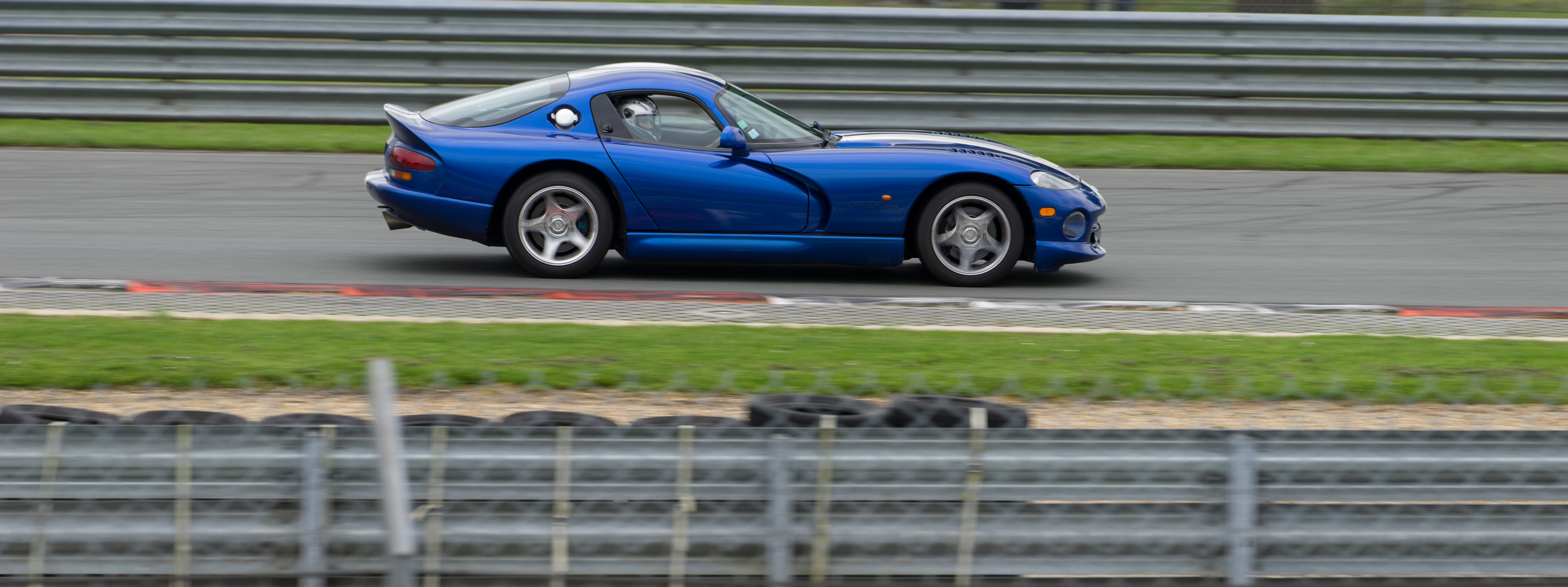
13. **Dodge Viper GTS-R 8.0L V10**From the heights of Japanese engine sophistication, we now return to the brutal, unyielding world of American motorsport with another V10 legend: the Dodge Viper GTS-R. Like the Lexus LFA, it was powered by a front-mounted, naturally aspirated V10 engine, but that is largely where the similarities between these two vastly different beasts end. First raced in 1996 and meticulously co-developed with the French motorsport firm Oreca, the GTS-R was an unapologetic racing machine built for endurance and raw power.
At its heart was a monstrous 8.0-liter V10, an engine that consistently produced between 659 PS (485 kW) and a formidable 690 PS (507 kW), coupled with a frankly hilarious 950 Nm of torque – numbers that speak volumes about its brute force. The rev limit was typically set at 7,200 rpm, although for the punishing demands of longer endurance races like Le Mans, it was intelligently pulled down to around 6,200 rpm to ensure durability and reliability under extreme stress, a testament to its robust engineering.
What the GTS-R achieved in both the USA and Europe is nothing short of impressive, solidifying its place as an American motorsport icon. In the capable hands of both factory teams and numerous privateers, this car managed an astonishing three Le Mans class victories, alongside three outright Nürburgring 24 Hour victories, one overall Daytona 24 win, and two overall Spa 24 Hours wins, not to mention a significant number of series championships, including five FIA GT titles. It was a true conqueror on the global stage.
In person, its sound, as you might expect from such a colossal engine, is a deeply penetrating one. It’s a noise that seems to resonate through every fiber of your being, a low, powerful rumble that perfectly encapsulates its relentless, muscular character. While it doesn’t offer the stratospheric, high-pitched wail of some of the higher-revving beasts on this list, we love its formidable, earth-shaking roar no less; it’s a sound that perfectly embodies the spirit of American endurance racing and the raw power of the Viper V10.
**The Enduring Roar: A Legacy Cast in Sound and Speed**
What an exhilarating journey we’ve had, hasn’t it? From the precision-engineered symphonies of Japan and Germany to the unapologetic, thunderous might of American powerhouses, the V10 engine truly stands as an anomaly, a glorious testament to an era where automotive engineers pursued unbridled performance and captivating sound with fervent passion. These engines weren’t just mechanical assemblies; they were the beating hearts of legends, machines that stirred the soul and pushed the boundaries of what a driving experience could be.
Car Model Information: 2017 Dodge Viper GTC
Name: Dodge Viper
Caption: 2013 SRT Viper GTS Launch Edition
Manufacturer: Dodge
Production: 1991–2006,2007–2017
Assembly: Detroit,Michigan
Class: Sports car
BodyStyle: liftback,coupe
Layout: Longitudinal engine,Front mid-engine, rear-wheel drive layout
Engine: Viper engine,{{convert,488,cuin,L,abbr=on,1,order=flip,lk=on
Abbr: on
Order: flip
Powerout: SR-I and II:,{{convert,400,hp,PS kW,0,abbr=on,lk=on
Lk: on
ModelYears: 1992–2006,2008–2017
Categories: 1990s cars, 2000s cars, 2010s cars, All accuracy disputes, All articles with unsourced statements
Summary: The Dodge Viper is a sports car that was manufactured by Dodge (by SRT for 2013 and 2014), a division of American car manufacturer Chrysler from 1992 until 2017, having taken a brief hiatus in 2007 and from 2011 to 2012. Production of the two-seat sports car began at New Mack Assembly Plant in 1991 and moved to Conner Avenue Assembly Plant in October 1995.
Although Chrysler considered ending production because of serious financial problems, on September 14, 2010, then–chief executive Sergio Marchionne announced and previewed a new model of the Viper for 2012. In 2014, the Viper was named number 10 on the “Most American Cars” list, meaning 75% or more of its parts are manufactured in the U.S. The Viper was eventually discontinued in 2017 after approximately 32,000 were produced over the 26 years of production.
The 0–60 mph (97 km/h) time on a Viper varies from around 3.5 to 4.5 seconds. Top speed ranges from 160 mph (260 km/h) to over 200 mph (320 km/h), depending on variant and year.
Get more information about: Dodge Viper
Buying a high-performing used car >>>
Brand: Dodge Model: Viper
Price: $275,000 Mileage: 13,105 mi.
It’s clear that the V10 is more than just a configuration; it’s an emotional connection, a visceral thrill that few other engines can replicate. The golden age of the V10 may have largely passed, but its legacy continues to echo through the automotive world, reminding us of a time when the roar of an engine was a symphony, and every press of the pedal was an invitation to an unforgettable performance. Long live the V10 – the absolute rulers of sound and the motorsport circuit!



